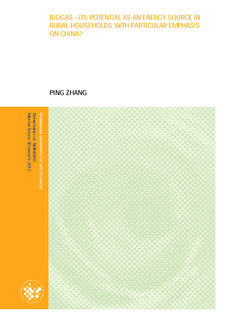Biogas : its potential as an energy source in rural households with particular emphasis on China
Master thesis
Permanent lenke
http://hdl.handle.net/11250/187822Utgivelsesdato
2012-09-10Metadata
Vis full innførselSamlinger
Sammendrag
Abstract
This thesis is based on a literature review to analyze various aspects of biogas technology and
address resource requirements and multiple values of biogas technology for rural household in
developing countries. Biogas technology has been developed and widely used to produce a
renewable, high-quality fuel, biogas. However, the development of biogas technology
significantly differs over the world, particularly between developing countries and developed
countries. In rural areas of developing countries, biogas is normally used for cooking, lighting,
heating, etc, and feedstock for biogas production derives from agricultural resources, such as
manure and harvest remains. In addition, biogas technology also contributes to GHGs
emission reduction and produces a valuable and improved fertilizer. According to the
calculations on the case from China, it shows if one household builds a 12m
3
digester to
produce 1.46m
3
biogas per day, it could cover their daily energy demand. It replaces straw,
firewood, coal, kerosene and LPG for lighting, cooking, heating water, etc. Moreover,
because of the higher effective using rate of biogas than other fuels (straw, firewood, coal and
kerosene), it saves 5,558,840kcal energy consumption yearly compared to the energy
consumption without biogas digesters. The feedstock requires 49kg pig manure and 61kg
water per day. In practice, it could be substituted by 24.5kg pig manure (from 4-5 pigs) with
the same amount of straw/crop residues. These resources are readily available under the local
conditions. In addition to energy (biogas) output, the digester also produces 39ton organic
fertilizer yearly recycled in the farmland of the household, which is at least sufficient to 0.48
hectare farmland for rice cultivation. With regard to environmental benefit, it reduces GHGs
emissions of 2.596 tonCO2e yearly. The capita reduction of CO2e accounts for 14.2% of total
capita CO2e emissions in China. The governmental subsidies are large, which accounts for
about 64% of capital costs. The result of calculations shows a relatively ideal model. Biogas
technology represents a sustainable way to produce energy for household, particularly in
developing countries.
